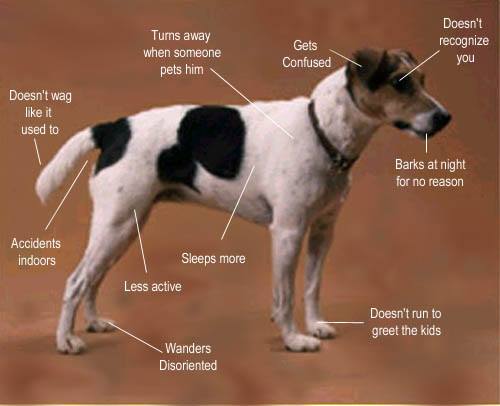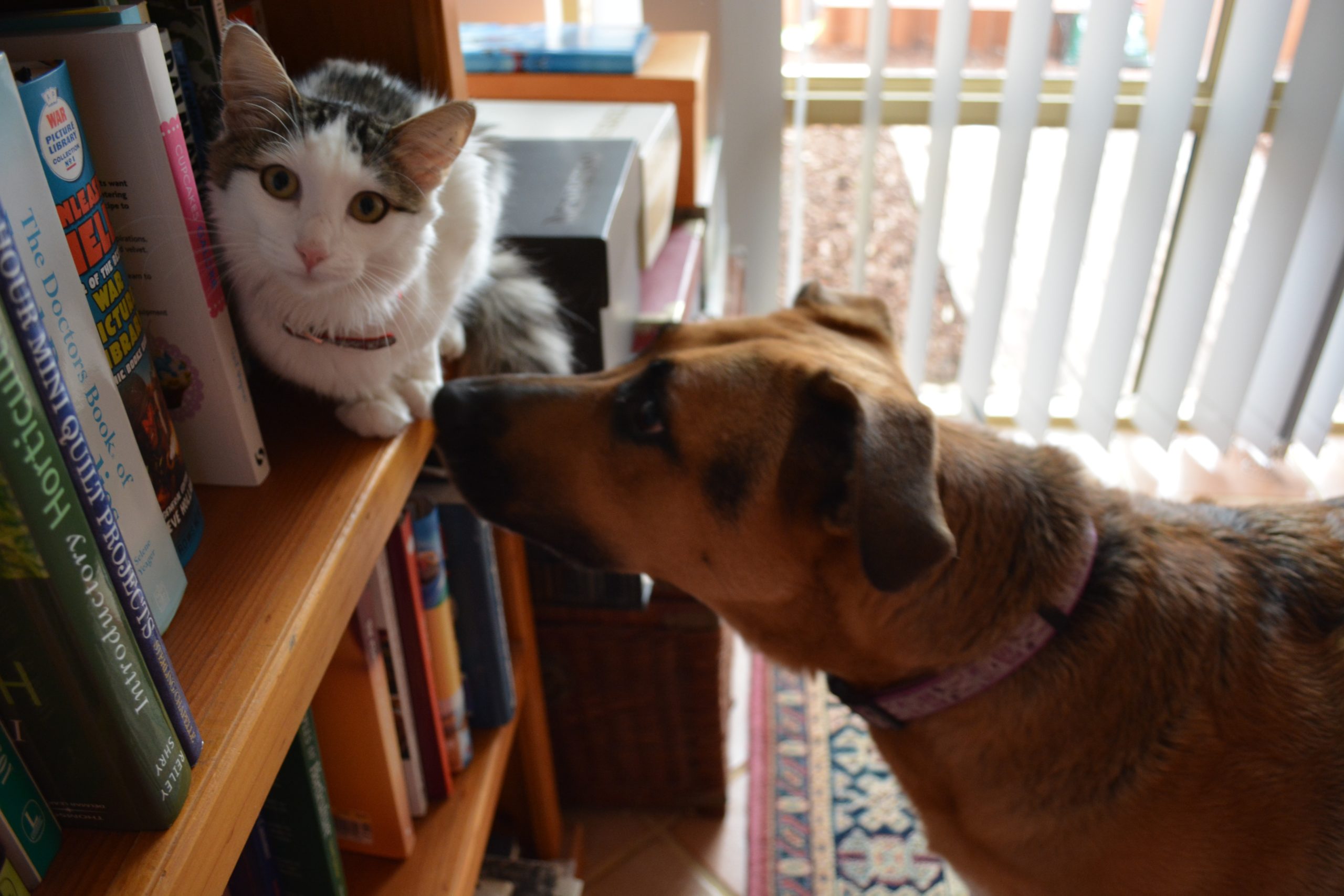Canine Cognitive Dysfunction (CCD) is a dementia-like syndrome that occurs in approximately 14% of dogs more than 8 years of age. It is similar to human Alzheimer’s disease.
How do I know if the behaviour problem is due to medical reasons?
As pets age they are likely to develop an increasing number of medical and degenerative problems. If a kidney problem is present, your pet is likely to drink more and therefore urinate more frequently. This can present as incontinence, or urinating inside the house. Diseases of the endocrine organs such as the thyroid gland and pituitary gland can lead to a variety of behavioural and personality changes. Arthritis and other painful conditions can make the animal irritable, or resistant to handling. A decline in hearing and sight can cause problems, such as if the animal is startled while resting or sleeping.
An increase or decrease in appetite and thirst are also signs to look out for. Blood and urine tests are carried out to check for underlying medical problems.
Can these medical problems be treated?
Many can be treated, depending on the cause, leading to the resolution or control of the problem. Some dogs may need alterations to their schedule or environment in order to deal with these problems. For example, kidney failure is not reversible and you may need to increase your dog’s opportunities to urinate appropriately by taking him outside more frequently, installing a dog door, or retraining him to urinate on newspaper inside. Cats will need more litter trays.
If arthritis, degenerative joint disease, or spinal pain is causing problems, there are treatments available to make your pet’s life less painful and increase mobility and quality of life. If a cat is not using a litter tray due to mobility problems, you can try a tray with lower sides.
What is Canine Cognitive Dysfunction?
The term Canine Cognitive Dysfunction (CCD) is given to a collection of behavioural changes seen in older pets and these changes are very similar to Alzheimer’s Disease in humans.
CCD is caused by physical and chemical changes in the brain of older dogs. Structural changes include a reduction in brain size, a loss of functional neurons and the deposition of Alzheimer’s-type plaques in the brain tissue. Chemical changes also occur such as a reduction in essential neurotransmitters. Blood vessels to the brain are constricted, cutting down its supply of oxygen, and so increases the problem.

Changes in a pet’s behaviour typically include:
- confusion and disorientation
- decreased interest in food
- general apathy
- decreased ability to recognise places and people
- disruption of the normal sleep/wake cycle
- wandering
- repetitive compulsive disorder
- persistent barking or whining, especially at night
- loss of learned behaviours, such as toilet training
- irritability and aggression
- reduced interaction with the owner
Can CCD be treated?
These changes in behaviour are usually readily recognised but, while 75% of the owners of aged pets notice at least one of the above signs, regretfully, most don’t realise the problem is often treatable and that’s unfortunate because the condition is progressive. Once the signs are seen, dogs get worse without treatment.
Before diagnosing CCD, you vet will carry out a thorough physical and neurological examination of the dog to ensure that there are no other possible or likely causes of the changes, such as arthritis, a reduction in vision and hearing, diabetes, liver disease, cardiovascular disease, neoplasia and anxiety disorders.
CCD can be treated and the options include medications, dietary changes, behaviour modification and changes to the pet’s environment.
Medications are available from your veterinarian for treatment of some forms of cognitive dysfunction in dogs. These drugs help to normalise neurotransmitter levels, increase blood supply and protect against nerve cell deterioration. If you recognise any of the above problems in your dog, it is worth trying treatment as many dogs show marked improvement and become more attentive, playful and interactive.
Sometimes drug therapy needs to be combined with behavioural treatment, for example, urinating indoors may have become a habit requiring rehouse-training. Like in humans, dogs need to ‘Use it or lose it’ – provide a rich environment designed to stimulate its brain using toys, simple brain challenges and brain games involving simple training routines (e.g. sit, drop, fetch) are ideal because many older dogs are chronically bored.
Changing the pet’s environment may also help. Because many old dogs are arthritic, be sure your dog has comfortable soft bedding and that the stairs it has to climb are not slippery. Be sure the dog can easily negotiate the back door and the steps so that when the call of nature beckons, it can easily get to the garden to relieve itself. Don’t forget to take it out for a wee walk before bed time.
Diets specifically for dogs with CCD are available from your veterinarian. These diets contain increased levels of antioxidants to reduce the free radicals produced in ageing brains. The antioxidants in this diet include Vitamins E and C. A special mix of fruit and vegetables are also added to give increased levels of the antioxidants known as carotenoids and flavonoids. Other ingredients are included to promote cell function and durability. Research has shown that this form of dietary management improved the learning ability of older dogs by 58%.
A study led by the Regenerative Neuroscience Group of the University of Sydney’s Brain and Mind Centre investigated whether brain engraftment of ‘patient-specific’ skin-derived neural stem-like cells can help cure dogs of Canine Cognitive Dysfunction. In a world first in 2015, scientists appeared to reverse signs of dementia in 13-year-old Timmy the Cocker Spaniel, paving the way for similar clinical trials in humans with dementia. The RNG team also developed the CCDR and Canine Dementia Scale (CADES), which are ratings scales used to screen pet dogs for CCD.
References
Regenerative Neuroscience Group: Canine Cognitive Dysfunction
World first: University of Sydney scientists reverse dog dementia with stem cell therapy




